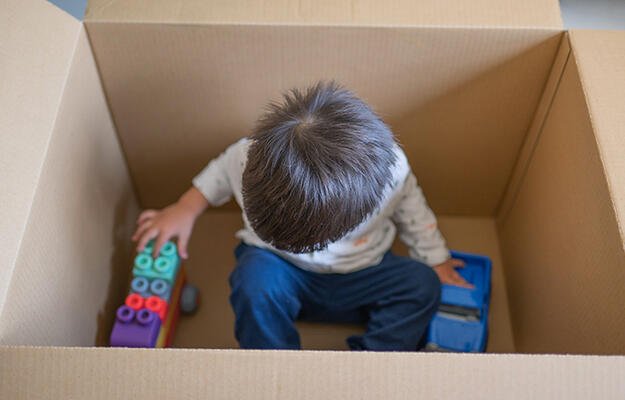
(GagliardiPhotography/Shutterstock)
How Housing Instability Affects Educational Outcomes
Students today have to contend with a variety of disruptions that can affect their housing stability. The lack of safe and stable housing is a serious barrier to students’ ability to learn effectively. By addressing housing instability, federal and state policymakers could improve educational outcomes for millions of students.
How many students experience housing instability?
Unlike student homelessness, which has several federal definitions, housing instability is often used as an umbrella term that includes homelessness and broader housing issues such as “trouble paying rent, overcrowding, moving frequently, or spending the bulk of household income on housing.” This broad definition can make it difficult to get an accurate count of the number of people in unstable housing situations at any given time.
The US Department of Housing and Urban Development’s report on worst case housing needs does not specify school-age children, but it identified more than 5 million children younger than 18 living in households who are “at or below 50 percent of area median income and paying more than one-half of their income toward rent, living in severely inadequate conditions, or both.” These findings suggest that millions of students each year are living in situations that could be considered unstable, but there is no definitive count of students experiencing housing instability.
And certain groups of students are much more likely to be unstably housed than others. As a result of systemic discrimination in real estate financing and federal housing policy, American Indian and Alaska Native, Black, and Latine households are more likely than white households to be renters with extremely low incomes. Students of color are also disproportionately likely to experience homelessness, meaning that students of color may disproportionately experience the negative academic effects that stem from housing instability.
Housing instability disrupts learning
Stable housing is a key facilitator of academic success for students of all ages, and the lack of stable housing can create major disruptions to learning for students.
Even a single eviction filing can have long-lasting effects for families and their children. Eviction filings have been found to decrease school attendance (PDF), and this decline continues even up to two years after the initial filing. A study that tested nine-year-olds on memory, math, and vocabulary found that children who had experienced an eviction in the year before testing performed worse by the equivalent of as much as a full year of schooling.
Frequent residence changes resulting from housing instability often result in frequent school changes (PDF) that can make students less likely to complete high school on time and more likely to complete fewer years of school.
Persistent housing quality issues can also prevent students from learning effectively. Overcrowded households can negatively affect children’s well-being and academic achievement. Issues with the physical conditions of their housing, such as mold, poor air quality, and lead paint, have also been shown to negatively affect children’s physical health and school performance.
How can policymakers support students in unstable housing situations?
To help students achieve their academic potential, state and federal policymakers can support the following evidence-based strategies.
- Improving school districts’ ability to identify students experiencing housing instability. To best utilize their resources, school districts should be able to identify and support those students with the greatest needs. Policymakers can provide more resources to school staff that work with unstably housed students, allowing school districts to use measures like residential mobility to identify at-risk students and engage with and support more unstably housed students.
- Expanding the ability of school districts to support students’ housing needs. Federal aid for student homelessness usually is not allowed to be used to pay for short-term housing, but several school districts used emergency federal aid during the COVID-19 pandemic to pay for hotel stays and other short-term housing for students. These programs helped to increase student attendance and school performance. Providing additional funding for rental assistance programs operated through school districts and expanding how schools can spend federal aid for student homelessness could help place students experiencing homelessness into stable housing and prevent other unstably housed students from falling into a homeless situation.
- Expanding partnerships between school districts and housing support systems. Connecting stakeholders in schools, like teachers or homelessness liaisons, to those in housing, like federal program officers or nonprofit workers, is key to increasing both groups’ ability to respond to students’ housing needs. Increasing collaborations between housing and school systems could help districts assist students in need directly and connect students and families to available support programs, ensuring students have the resources they need to succeed.


